Visualizing the Connection in Five Sets of Photos and Charts
Every year, millions of acres of land are consumed by fire in the United States. By raising temperatures, melting snow sooner, and drying soils and forests, climate change is fueling the problem. Here’s what we know.
#1: Wildfires are getting worse
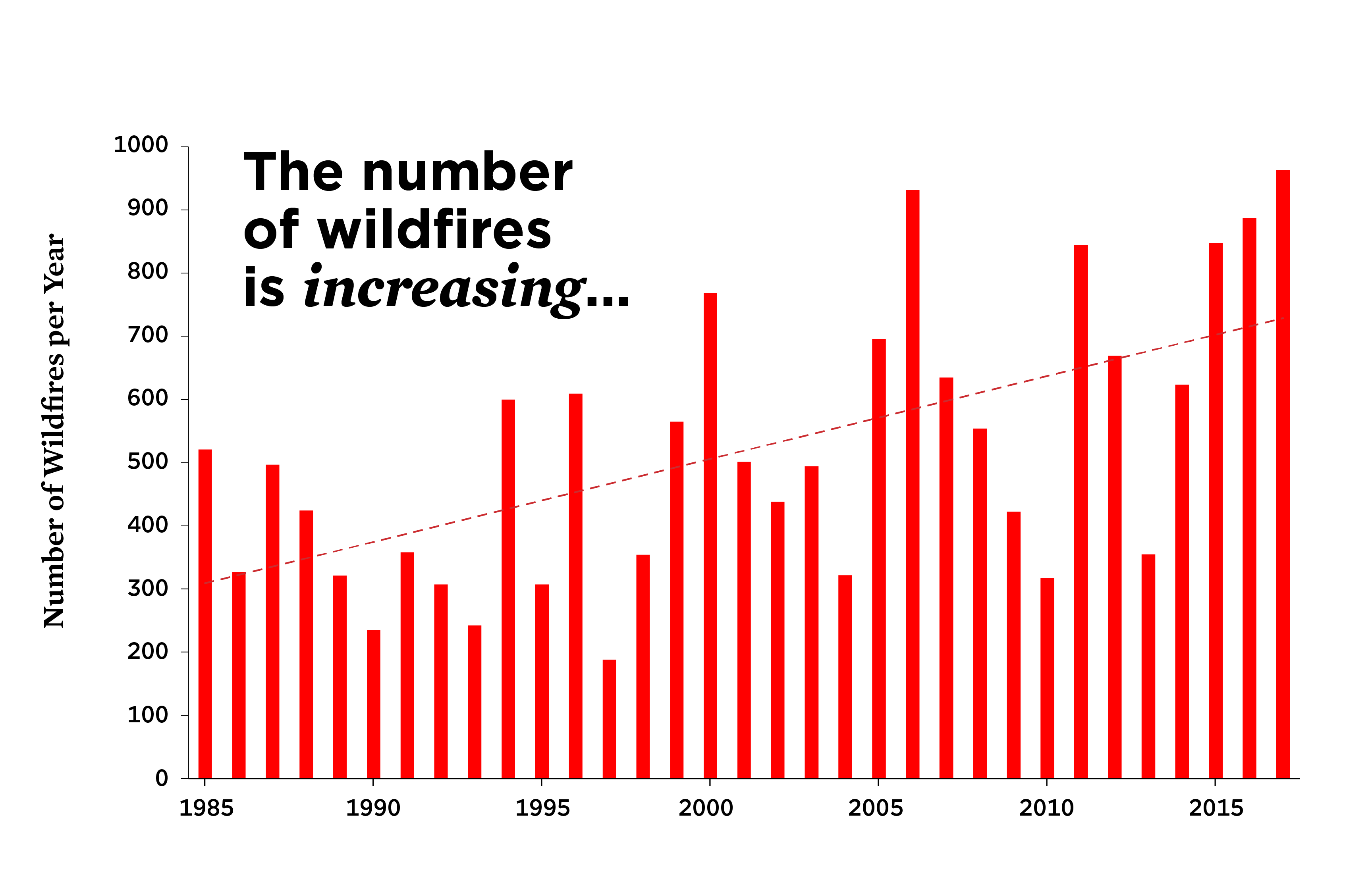
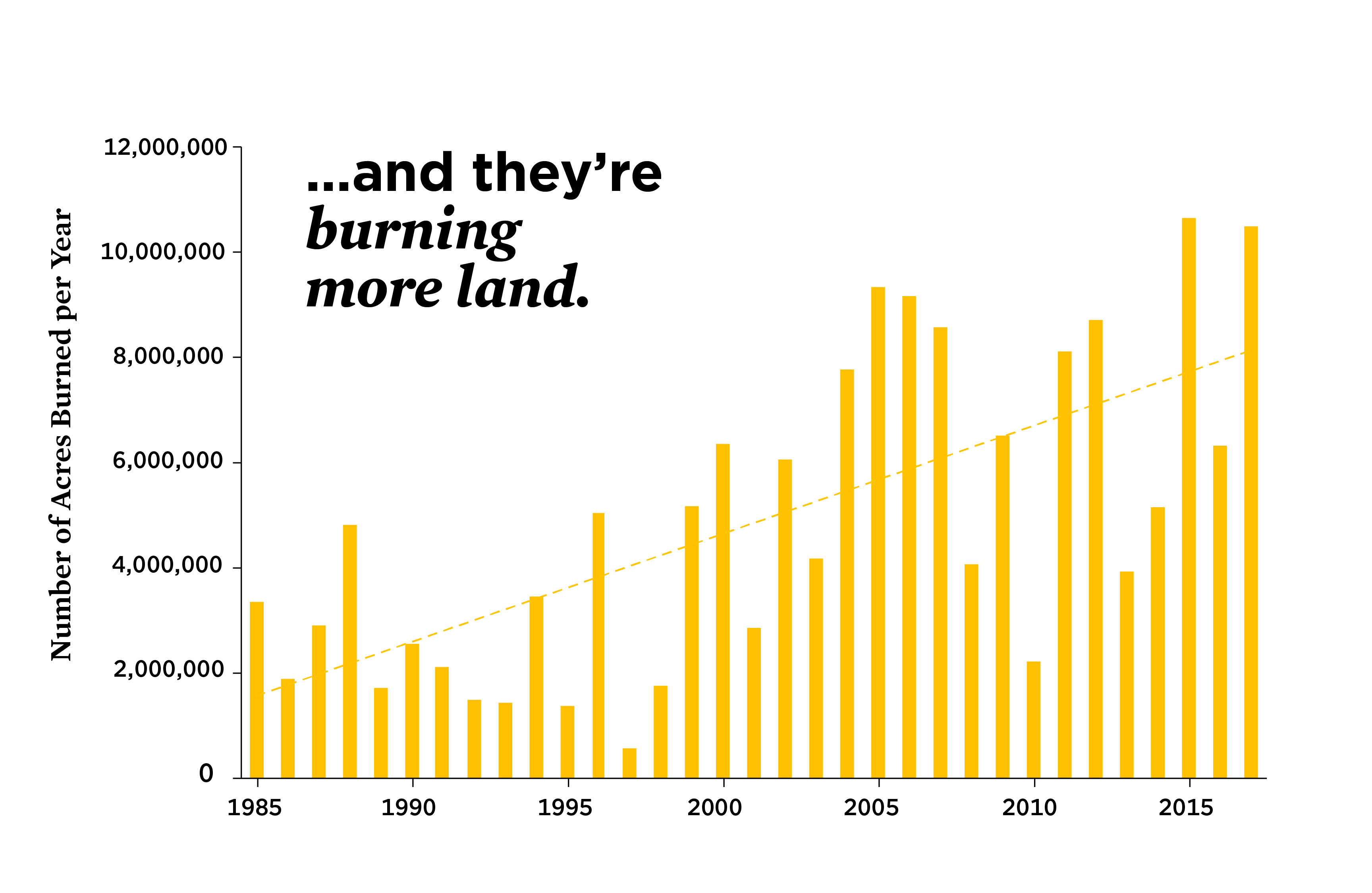
Data from the Monitoring Trends in Burn Severity program. MTBS only includes large fires in the United States (>500 acres for the eastern US, >1000 acres for the west). Prescribed fires removed.
Since 2015, the United States has experienced, on average, roughly 100 more large wildfires every year than the year before. This changes region by region, and year to year, but generally we’re seeing more wildfires, more acres burned, and longer, more intense fire seasons.
#2 Wildfires are causing more harm
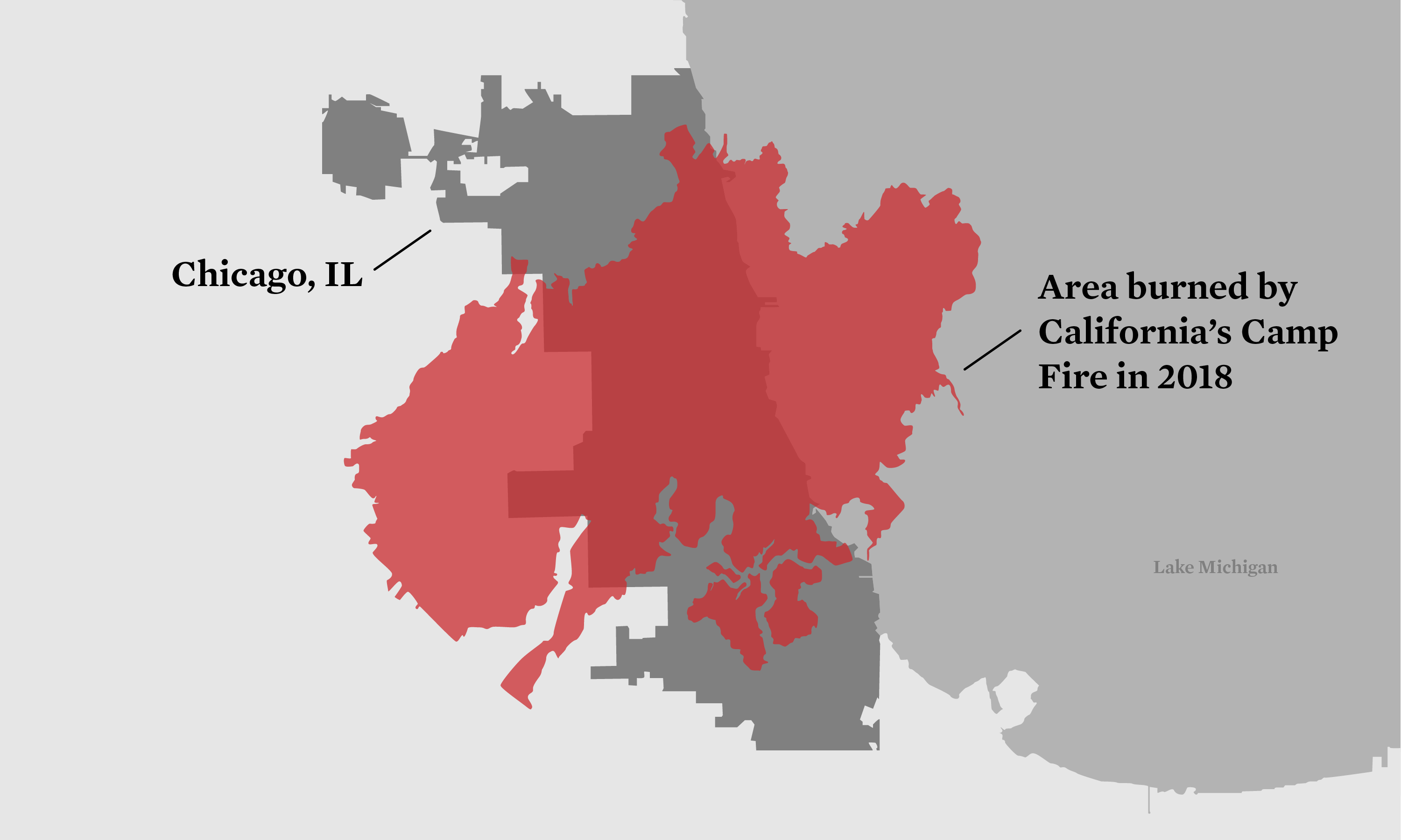
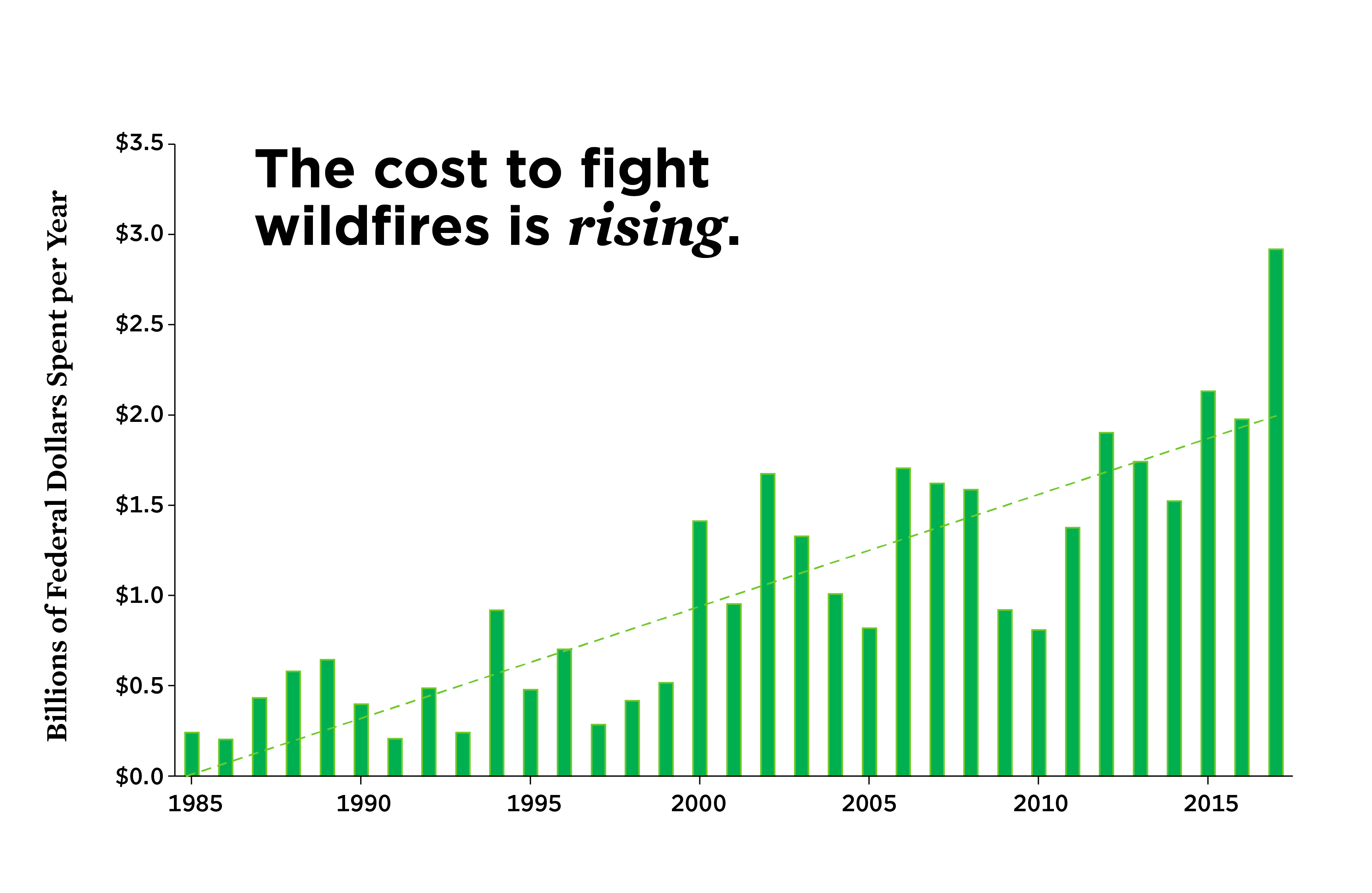
Since 2015, the United States has experienced, on average, roughly 100 more large wildfires every year than the year before. This changes region by region, and year to year, but generally we’re seeing more wildfires, more acres burned, and longer, more intense fire seasons.
#2 Wildfires are causing more harm


On left, the perimeter of the massive Camp Fire is overlayed on Chicago. Federal suppression costs from the National Interagency Fire Center.
Wildfires are dangerous and destructive. The historically large Camp Fire of 2018 caused at least ninety deaths, destroyed more than 18,000 structures, and covered an area roughly the same size as the Chicago metropolitan area.
They're also expensive. Between 2014 and 2018, the federal government spent an average of 2.4 billion dollars fighting wildfires every year. Even when adjusted for inflation, that’s more than twice what we spent 20 years earlier (1994-1998).
And as the forests burn, they release carbon dioxide and other global warming gases, worsening climate change. As wildfires burn more land, emissions go up.
#3: Climate change is a key driver
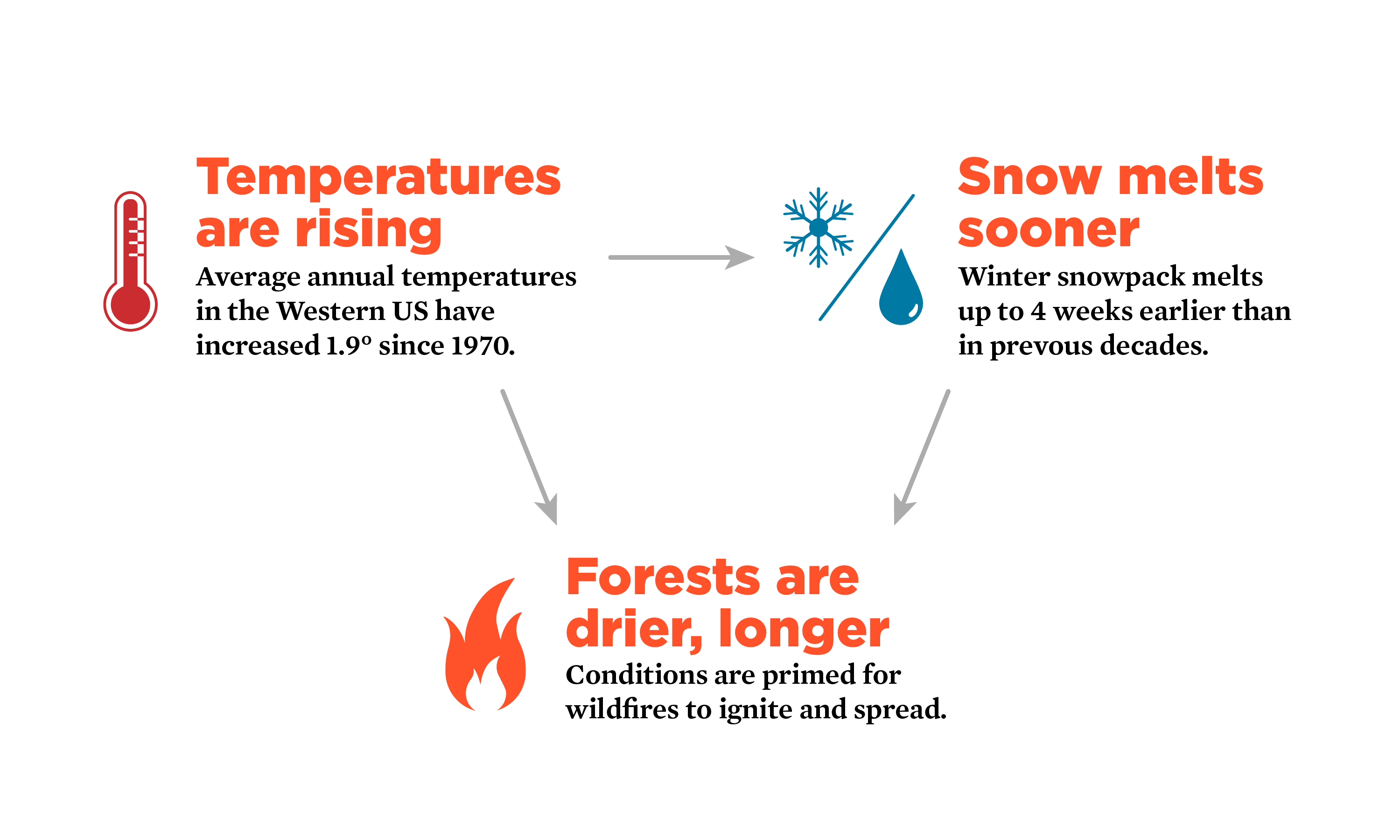
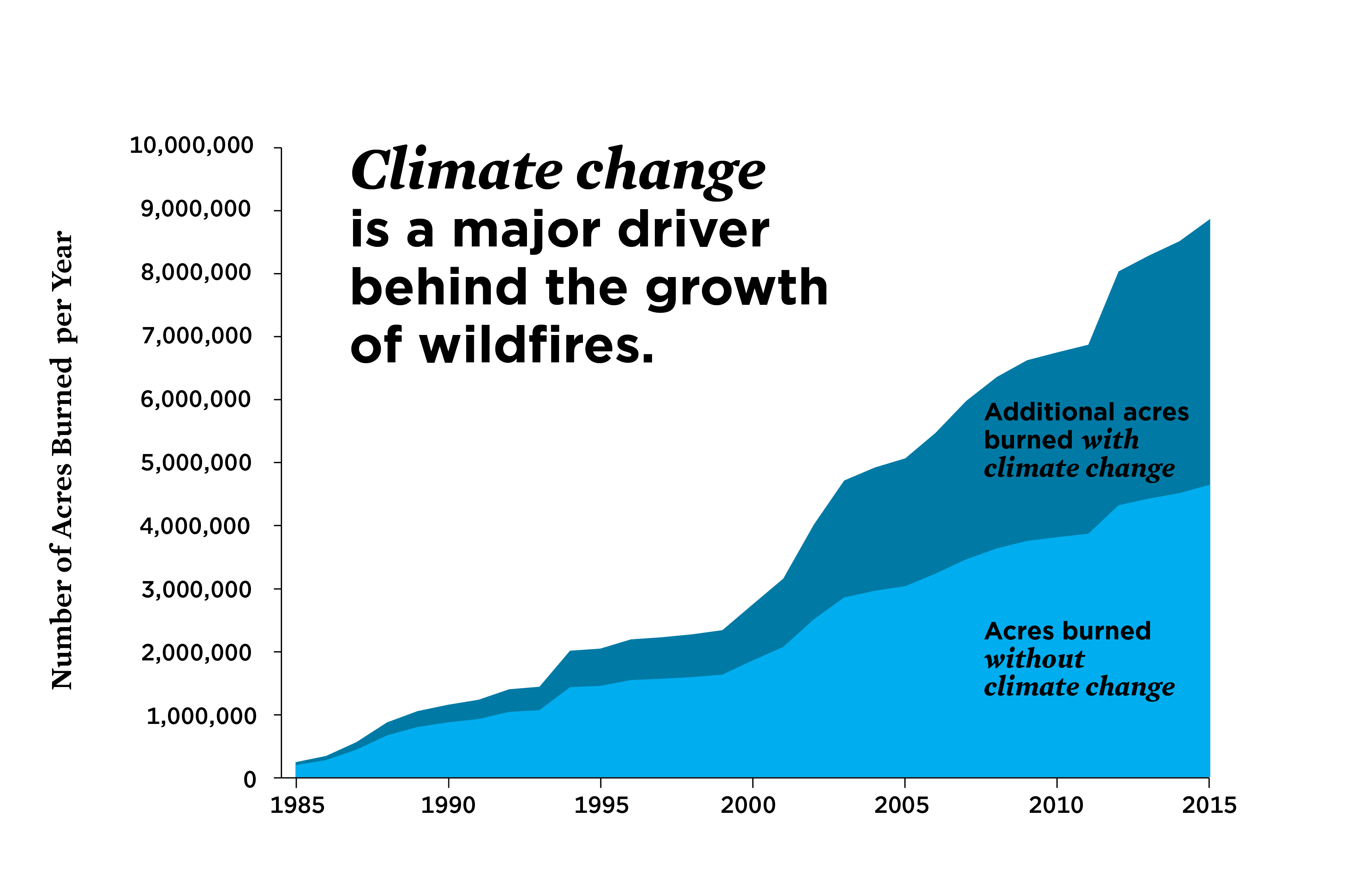
Wildfires are dangerous and destructive. The historically large Camp Fire of 2018 caused at least ninety deaths, destroyed more than 18,000 structures, and covered an area roughly the same size as the Chicago metropolitan area.
They're also expensive. Between 2014 and 2018, the federal government spent an average of 2.4 billion dollars fighting wildfires every year. Even when adjusted for inflation, that’s more than twice what we spent 20 years earlier (1994-1998).
And as the forests burn, they release carbon dioxide and other global warming gases, worsening climate change. As wildfires burn more land, emissions go up.
#3: Climate change is a key driver


Attribution data from John T. Abatzoglou and A. Park Williams, Impact of anthropogenic climate change on wildfire across western US forests.
Fire has historically been a natural part of many wild landscapes. But global warming has changed some of the underlying variables that make wildfires more or less likely to occur every year.
Warmer temperatures increase the likelihood that fires will burn more intensely. They also cause snow to melt sooner, and lead to drier soils, forests, and plants, which act as kindling. Increased droughts, unusual rain patterns, and insect outbreaks that lead to large stands of dead trees are also connected with climate change—and they all make wildfires more likely.
#4 Management matters
Other factors also influence wildfire risk—especially management and development decisions in fire-prone areas near forests.
In the western United States, forests historically evolved with frequent, low-intensity fires that removed underbrush, debris, and fallen timber. This allowed for larger trees and made massive fires much less common.
But for the past century, almost all fires have been suppressed, even small ones. This has allowed forests to maintain denser growth and more potential fuel, leading to larger and more intense wildfires.
In addition, development near and into previously wild areas has increased fire risk and made fire-fighting more costly, challenging, and dangerous.
Government agencies have tried to lower forest density through prescribed burning (purposefully lit, low-intensity fires) and thinning (the physical removal of brush, vegetation and dead trees), but have struggled to do so at scale.
On smaller landscapes in the southeast, land managers conduct far more frequent prescribed burns. These fires bring their own risks, including poor air quality, and the chance of growing to be a damaging wildfire. But by mimicking smaller "natural" fires, prescribed burns can benefit forest ecology, and help mitigate at least some of the increased wildfire risk presented by climate change.
#5 Action is possible
In the near term, ecologically-sound forest and fire management could help limit fire risks.
But in the long-term, climate action is the best tool we have. When we reduce global warming emissions, we slow the growth of climate risks, including wildfire. Until then, summers will continue getting hotter, forests will get drier, and more and more people will face the threat of wildfire.
Photo credits: Burning car and home, and burnt neighborhood by Josh Edelson/Getty. Smoke plume by David McNew/Getty. Firefighter carrying drip torch courtesy of the National Park Service. Protesters by Leonhard Foeger/Reuters.
Fire has historically been a natural part of many wild landscapes. But global warming has changed some of the underlying variables that make wildfires more or less likely to occur every year.
Warmer temperatures increase the likelihood that fires will burn more intensely. They also cause snow to melt sooner, and lead to drier soils, forests, and plants, which act as kindling. Increased droughts, unusual rain patterns, and insect outbreaks that lead to large stands of dead trees are also connected with climate change—and they all make wildfires more likely.
#4 Management matters
Other factors also influence wildfire risk—especially management and development decisions in fire-prone areas near forests.
In the western United States, forests historically evolved with frequent, low-intensity fires that removed underbrush, debris, and fallen timber. This allowed for larger trees and made massive fires much less common.
But for the past century, almost all fires have been suppressed, even small ones. This has allowed forests to maintain denser growth and more potential fuel, leading to larger and more intense wildfires.
In addition, development near and into previously wild areas has increased fire risk and made fire-fighting more costly, challenging, and dangerous.
Government agencies have tried to lower forest density through prescribed burning (purposefully lit, low-intensity fires) and thinning (the physical removal of brush, vegetation and dead trees), but have struggled to do so at scale.
On smaller landscapes in the southeast, land managers conduct far more frequent prescribed burns. These fires bring their own risks, including poor air quality, and the chance of growing to be a damaging wildfire. But by mimicking smaller "natural" fires, prescribed burns can benefit forest ecology, and help mitigate at least some of the increased wildfire risk presented by climate change.
#5 Action is possible
In the near term, ecologically-sound forest and fire management could help limit fire risks.
But in the long-term, climate action is the best tool we have. When we reduce global warming emissions, we slow the growth of climate risks, including wildfire. Until then, summers will continue getting hotter, forests will get drier, and more and more people will face the threat of wildfire.
Photo credits: Burning car and home, and burnt neighborhood by Josh Edelson/Getty. Smoke plume by David McNew/Getty. Firefighter carrying drip torch courtesy of the National Park Service. Protesters by Leonhard Foeger/Reuters.
No comments:
Post a Comment